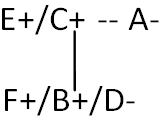Nowadays, CLAT logical reasoning plays a crucial role in exams pertaining to CLAT exam . It can be very scoring if you practice enough and understand what all makes up this subject, which brings us to an important question, which is,
‘What is CLAT logical reasoning?’
CLAT Logical reasoning, simply connotes those questions which aim at checking your rational thinking and how well you can analyse the problem given and arrive at the correct answer. It aims at identifying whether as a straight-thinking person, if you have the ability to understand the problem and reach the desired conclusion.
In logical reasoning, just like maths, you will either discern the right answer or there will be no answer at all. Hence, there is no scope of guess-work here. All you need is practice and practice!
Just like other exams, logical reasoning plays an important role in the Common Law Admission Test, i.e., CLAT as well. Since, the law is all about reading legislations, rules, regulations, by-laws, etc., understanding logical basis of the same and giving them apt interpretation, hence, a separate section is devoted to logical reasoning.
Moreover, CLAT being the gateway for admissions to various undergraduate courses in law in 22 prominent
National Law Universities (NLUs) of India, it becomes important for you to be thorough in the subject of reasoning.
We’ve mentioned a few tips for you which will help in understanding this subject better. The same is as follows:
WEIGHTAGE: 20% (40 QUESTIONS OUT OF 200)
IMPORTANT TOPICS
- Logical Reasoning: Statement Assumptions/ Conclusions/ Arguments/Actions
- Syllogisms
- Logical sequences
- Number Test
- Coding-Decoding
- Verbal Reasoning: FIJ
- Logical Reasoning: Statement Assumptions/ Conclusions/ Arguments/Actions
- Blood Relations
- Directions
- Ranking
- Arrangements
- Calendar, etc.
By now, we understand what all topics should be covered for the logical reasoning section of CLAT.
But what points should you keep in mind for having sufficient preparation of these topics?
Why is Logical Reasoning section important for CLAT?
Among all the 5 sections of CLAT, this section is considered relatively difficult BUT IT IS SIMPLY A MYTH. The section can be easily mastered with dedicated practice. Also the number of questions, you encounter from this section in CLAT is high; therefore, you SIMPLY cannot afford to ignore this section. If your concepts are clear, this section can help you boost your overall CLAT score.
We have come up with some suggestions and tips for a concrete preparation strategy to help you score well in this section of CLAT:
1. Know your Basics well:
Reasoning questions from areas like coding, directions, blood relations, syllogisms, etc. can be easily solved if you know the basics of these topics and identify the correct pattern. Although this section is considered as relatively tough, you can easily solve 33-37 questions from this section, once you are thorough with a clear understanding of concepts. Let us look at a few questions that were asked in previous years' CLAT:
SAMPLE QUESTIONS FOR CLAT LOGICAL REASONING
Read the following information carefully and choose the most appropriate option:
In a joint family, A, B, C, D, E, and F are the members. B is the son of C. A and C are husband and wife. C is not the mother of B. E is the brother of C. D is the daughter of A and F is the brother of B.
Q. Who is the mother of B?
Q. Which of the following is a pair of females in the family?
Soln:

So A is the mother of B and AD is a pair of females in the family.
Read the following information carefully and choose the most appropriate option:
A and B are good in driving bus and car. C and A are good in driving car and scooter. C, D and E are good in driving scooter and tractor. E and C are good in driving scooter and auto- rickshaw. D and B are good in driving bus and tractor.
Q. Who is good in driving tractor, scooter, car and auto-rickshaw but not bus?
1. D 2. C 3. A 4. B
Soln: A and B are good in driving bus and car.
C and A are good in driving car and scooter.
C, D and E are good in driving scooter and tractor.
E and C are good in driving scooter and auto- rickshaw.
D and B are good in driving bus and tractor.
By analyzing above data, we get C who is good in driving tractor, scooter, car and auto-rickshaw but not bus. Hence answer is 2nd option.
Q. Who is good in driving scooter, tractor and bus?
1. C 2. A 3. B 4. D
Soln: A and B are good in driving bus and car.
C and A are good in driving car and scooter.
C, D and E are good in driving scooter and tractor.
E and C are good in driving scooter and auto- rickshaw.
D and B are good in driving bus and tractor.
By analyzing above data, we get D who is good in driving scooter, tractor and bus. So answer is 4th option.
2. Sufficient practice:
The real challenge lies in solving questions in a time efficient manner. Knowledge of fundamentals or basics alone is not enough unless sufficient practice of all question types is done.
3. Plan of action:
You should follow a well-organized action plan. Specific time has to be devoted exclusively for this section. You must reserve at least 45-60 minutes daily to focus your attention on this section and identify your areas of strength and weakness. This will solidify your preparation and will benefit you immensely on the CLAT exam day.
